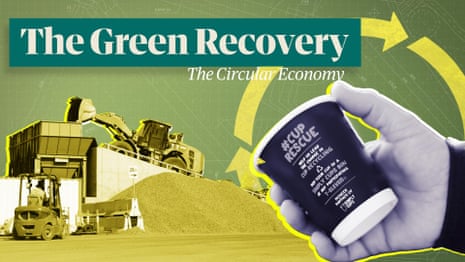Refurbished smartphones are widely available – so should you buy one?
Buying new smartphones gets worse for the wallet every year. Back in 2008, the first generation iPhone cost about $700. The tenth generation started at $1,549. Today, the top-shelf iPhone 12 Pro Max with more than 500gb of storage is an uncomfortable $2,369 – about a third more than the cheapest Apple laptop.
On top of that, e-waste is the world’s fastest-growing solid-waste stream, increasing at a rate three times faster than general waste in Australia.
Samsung Galaxy S21 Ultra review: the new king of Android phonesRead more
One or both of these factors have sparked increased demand for cheaper refurbished phones. Late last year Boost Mobile and Coles trialled selling refurbished iPhone 7s in selected stores and faced “phenomenal” demand, so they have expanded their offering in 2021.
Refurbished phones are no longer just something you see on eBay, they’re now widely available to purchase from major networks and retailers across the country. At Coles, a refurbished Boost Mobile iPhone 8 starts at $359, while Dick Smith sells refurbished Samsung Galaxy S9 phones from $389.
For newer models, the discount is not quite so steep. For instance, a refurbished 64GB iPhone 11 Pro from NuMobile costs $1,296, just $3 less than a new model currently being sold at a discount for $1,299 at JB Hi-Fi.
What is a refurbished phone?
A refurbished phone is one that was previously owned (not to be confused with an ex-demo phone, whose former life was on display in a bricks-and-mortar shop). These phones have been sold or traded-in to a company that then runs quality tests and brings it back up to the best possible working order. This often means replacing the battery or a cracked screen. You’ll mostly see refurbished big-name smartphones such as Apple and Samsung.
The refurbished phone will then be graded, usually based on appearance. There’s no standardised grading system, so read the fine print. A phone with medium to heavy signs of wear will usually be the cheapest. One ranked as “good” with light signs of wear like minor scuffs will cost a little more, and “excellent” and “as-new” will be the most expensive.
Regardless of wear, all phones with these ratings will be fully functional, but – depending on the age of the device – may not run as smoothly as a new phone.
Do refurbished phones last as long?
Think of buying a refurbished phone as similar to adopting an older dog. The fact that the pet is older doesn’t mean it will die younger than if you adopted it as a puppy, but you will have less time with it.
iPhone 12 Pro Max review: Apple’s longer lasting superphoneRead more
A refurbished phone should not be defective or of lesser quality. The lifespan of a product varies from brand to brand, and electronics by nature don’t last as long as many other purchases.
Apple industry analyst Horace Dediu used Apple’s “active device” number to estimate that the average lifecycle of an Apple product made between 2013 and 2018 is four years and three months. In 2017 consultancy firm Kantar found that, on average, people held onto their smartphones for as little as 20 months in some countries.
Apple users face another issue: iPhones are also only supported with the latest iOS for five years, meaning models older than that will no longer be able to update their operating systems, and will quickly become obsolete. Without the latest iOS some apps and programs will progressively stop working as their technology advances beyond yours. It has already been close to five years since the iPhone 7 was released, so there’s no guarantee they’ll be supported after the next major iOS upgrade.
What are my consumer rights if the product is faulty?
Under Australian Consumer Law, if a product or service you buy fails to meet the consumer guarantee, you have the right to ask for a repair (if the fault is minor), replacement or refund (if it has major problems). These rights apply to both new and secondhand goods, though the length of time the rights apply depends on what is reasonable for the product. “The fact that some parts of the good are secondhand affects, but does not determine, its reasonable durability,” the Australian Competition and Consumer Commission tells Guardian Australia.
Part human, part machine: is Apple turning us all into cyborgs?Read more
It also advises that “a business should be clear about what components in a refurbished good have been replaced and what components are secondhand, so a consumer can make an assessment about how long the refurbished goods’ components are likely to last”.
“Where a refurbished good has multiple components, a reasonable consumer would expect that the secondhand components may not last as long as the same component of an identical good that is not secondhand.”
That being said, many retailers offer warranties on refurbished phones similar to those of new products. A Boost Mobile refurbished iPhone 8 available at Coles comes with a 30-day satisfaction guarantee and 12-month warranty. Telechoice offers 12-month warranties on refurbished phones bought outright, and 24-month warranties for phones on a plan.
Are they better for the environment?
The longer you keep your phone, the better for the environment. In fact, keeping a phone for an extra year beyond the average two-and-a-bit reduces its lifetime CO2 impact by a third.
This is because up to 95% of the device’s total CO2 emissions over that average two-year lifespan come from making the phone. Smartphone production is carbon-intensive, due to the amount of rare materials used. These have to be mined, which not only releases carbon but also depletes finite stores.
Covid has made ‘voice notes’ the perfect way to stay connected | Magdalene AbrahaRead more
And the environmental impacts of technology are only getting worse. Although devices have shrunk over the past several decades, a study at McMaster University in Canada found that the information and communication industry’s global carbon footprint contribution tripled between 2007 and 2016 – a trend that is forecast to continue.
Recycling service 1800-eWaste estimates between 95-98% of the components that make up electronics by weight can be recycled, so when you upgrade, make sure you sell, trade-in or recycle your old device with companies like Mobile Muster.
Are there other options?
If you’d still prefer a new smartphone, there are many available at a more competitive price. A new Google Pixel 4a is $599; a new Motorola Moto G 5G Plus is around $650; and you can pick up a Realme 6 for under $300. If, like more than 70% of Australian smartphone owners, you’re stuck on Apple, consider the cheaper iPhone SE, starting at $679.
 00:03:49The Green Recovery: how Australia can close the recycling loop – video
00:03:49The Green Recovery: how Australia can close the recycling loop – video




